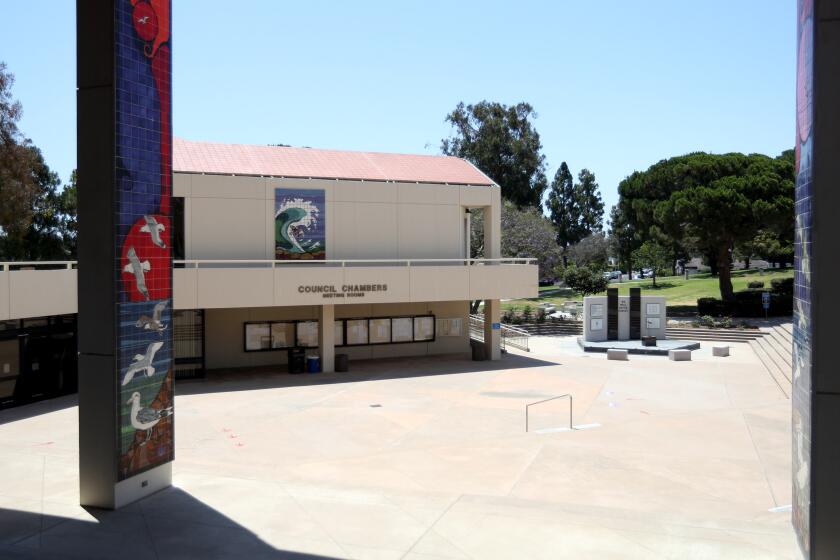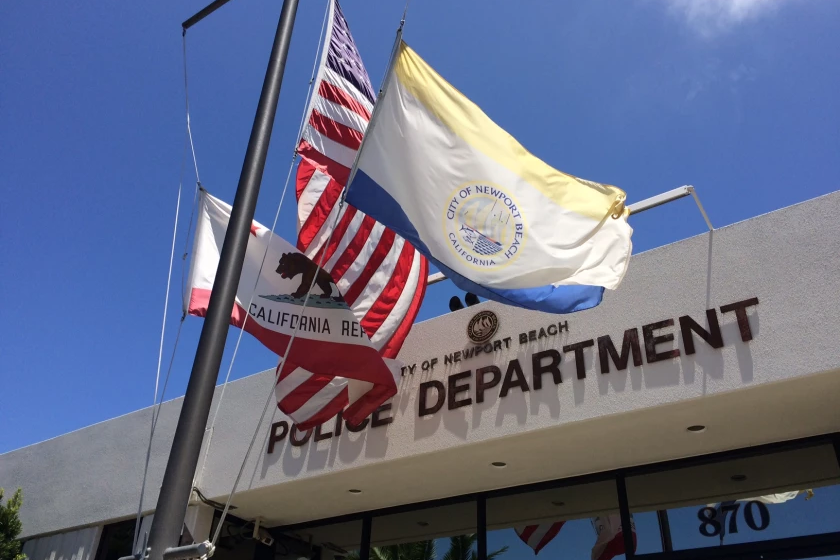‘Awesomely awesome’
- Share via
Mike Sciacca
Guy Gardner has been doubly blessed, doing something most of us will
never get to attempt in our lifetime.
The former NASA astronaut has been hurled into space on two
separate occasions, as pilot on the orbiters Atlantis and Columbia.
Although he’s known the thrill of being weightless and of viewing
Earth from space, to this day, he still finds it hard to put into
words what those experiences have been like.
That’s what the 57-year-old, now working in the aeronautics
department at Purdue University in West Lafayette, Ind., told more
than 300 youth at the Huntington Valley Boys & Girls Club. The
children gathered Friday to hear Gardner talk about space
exploration, as well as exploring their own dreams.
When asked by one of the children to sum up his space journeys,
Gardner said that it was hard to describe but did emphatically say
that it was “awesomely awesome” to look at Earth from space.
“There aren’t enough words in the English language, in any
language, to describe what it’s like to go into space,” he said. “It
really is an indescribable experience.”
Tanya Hoxsie, chief executive officer of the Boys & Girls Clubs of
Huntington Valley, said Gardner’s appearance at the Kingston Branch
on Friday would be an inspirational experience for the club’s youth.
“Many young boys and girls dream of flying into space, but only a
few get the chance to make that dream come true,” she said. “We are
honored to have the opportunity to learn firsthand about the
adventures that astronaut Guy Gardner has experienced.”
Two weeks ago, NFL All-Pro tight end Tony Gonzalez, who graduated
from Huntington Beach High School, came to the club to talk to the
children about pursuing their dreams.
Hoxsie said that Gonzalez and Gardner are two “positive role
models” whose exemplary leadership skills can be of inspiration to
the children.
Gardner’s appearance also benefited the Kingston Branch’s Flying
Club, where members learn about aviation and aerospace through
activities such as flight simulations at the club’s tech labs.
Gardner drew the youngsters into his presentation Friday by
showing them a film of his space travels, which began with a shot of
a model of the building of an International Space Station, which he
said will be about the size of a football field when finished
“I wanted to show these kids what it’s like to fly into space, to
go beyond gravity,” he said. “My hope is to weave in them a dream,
and to dream what life can offer. Lifelong learning and integrity is
what you need to accomplish your dreams.”
Gardner was selected as a pilot astronaut by NASA in May 1980.
During an 11-year career as an astronaut, he worked in several areas
of space shuttle and space station development and support.
He first flew into space as pilot on the crew of STS-27 aboard
Atlantis, a four-day classified mission that carried a Dept. of
Defense payload in 1988. That flight was the second mission after the
January 1986 explosion and destruction of the space shuttle
Challenger and the death of its crew.
Gardner said he was never nervous about going into space.
“I really wasn’t. I was very excited, though,” he said. “I had a
lot of confidence in the men and women who prepared our shuttle,
faith in the crew and faith in God. What better place could I be?”
He went up a second time in 1990, as pilot on the crew of STS-35
aboard Columbia. The nine-day mission carried the ASTRO-1 astronomy
laboratory consisting of three ultraviolet telescopes and one X-ray
telescope.
In 1992, he retired from the Air Force and returned to NASA to
direct the joint U.S. and Russian Shuttle-Mir Program.
Following his visit Friday to the club, Gardner went on to serve
as the keynote speaker at the Boys & Girls Clubs of Orange County’s
Youth of the Year banquet at the Hilton Waterfront Beach Resort.
Having seen the nation’s space program change throughout the
years, he told the children that he’s excited about what the future
holds and that they, one day, will be able to visit space.
“What’s very exciting is that not only will NASA have rockets, but
private companies are building private rockets that will be able to
take the average citizen into space,” he added. “One day, these kids
might be able to buy a ticket and go into space. Just like that.
That’s pretty cool.”
* MIKE SCIACCA covers sports and features. He can be reached at
(714) 966-4611 or by e-mail at michael.sciacca@latimes.com.
All the latest on Orange County from Orange County.
Get our free TimesOC newsletter.
You may occasionally receive promotional content from the Daily Pilot.









